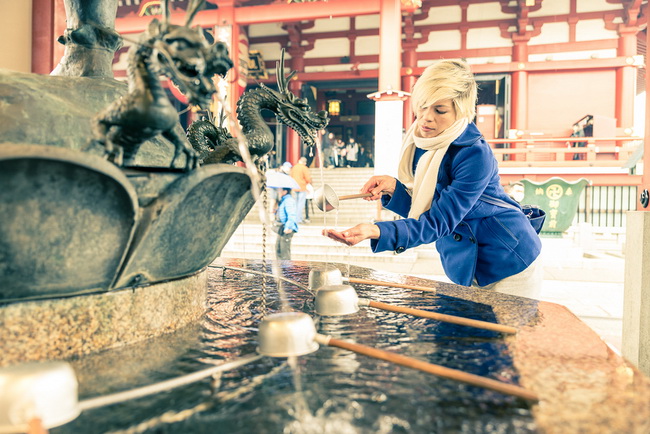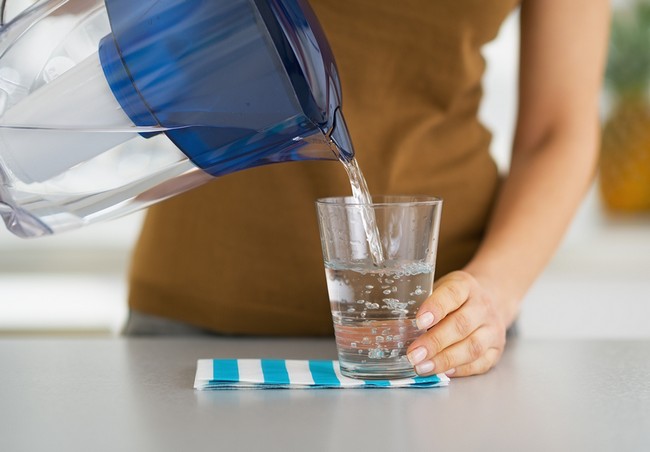- Make It Yourself Lavender Heart-Shaped Bath Bombs!
- 20 Things You Never Knew About “Down There”
- 12 Best Foods For Those Suffering From Arthritis Pain
- 12 Personal Hygiene Mistakes Almost Everyone Makes (Mom Never Told You About #4!)
- 15 Medicinal Plants And Herbs From The Cherokee People
- 12 Mind-Blowing Benefits Of Drinking Coconut Water During Pregnancy
- 12 Outstanding Winter Foods That Won’t Fatten You Up Like A Christmas Turkey
Emergency Water Purification Methods: Have Clean Water in 1 Minute!

Photo credit: bigstock.com
Most of us don’t think twice about our water supply. We can buy water that has been purified or we have a purification system set up at our home. But what happens when a disaster such as a hurricane, earthquake, or some other type of problem interrupts our water supply? Or what if, when you are traveling or camping, you simply question the purity of the water you find?
Water related illness kills more than 3 million people each year! Typical symptoms after drinking contaminated water are vomiting, severe cramps, fever, and what is commonly referred to as “Montezuma’s Revenge” (diarrhea). If you should become infected with E.coli, it can be fatal and although this infection usually comes from eating uncooked or undercooked meat, you can become infected from contaminated water as well.
Perhaps the worst, and most common, source of water contamination comes from, well, fecal matter. Let’s be frank, everyone and everything poops and it takes very, very little poop to contaminate water. These are just some of the microbes that are derived from fecal waste:
- Protozoa
- Cryptosporidium
- Giardia lamblia
- E. coli
- Shigella
- Campylobacter
- Salmonella
Your water can also carry viruses including hepatitis A, norovirus, rotavirus, and the enterovirus.
Since you never know when you will run into a situation where you want to ensure that your water is as clean as possible, the following information is good to know, and can be vital to the survival of you and your family. Remember, if you have any doubt, purify your water. Even clear looking mountain streams can contain protozoa called giardia, which will make you violently ill.
Continue to Page 2

Photo credit: bigstock.com
Keep reading for the quickest and easiest ways to purify water should you ever find yourself in a dire situation. Keep in mind that most water “filters” don’t purify water, they simply clean it. This means that they remove dirt and things that will cloud up the water, but they don’t remove bacteria, chemicals, or viruses.
1. Clean and Purify
If your water looks cloudy or if you see particles floating in it, the best thing to do is to clean the water first, then purify it. Remember that these are not the same thing! To get an idea about what we mean, think about a kitchen sponge. You could use it to “clean” the toilet, but would you want to use it to wash your dishes later? Not until you have “purified” it, right?
In order to clean the water, there are many methods, but in an emergency situation, this is probably the simplest: Use a cotton tube type of athletic sock and put a nylon, such as a piece of pantyhose, inside the sock. Now you can pour the water into the sock and allow the clean water to drip into another container. Be certain that the container is clean! You can repeat this process using another (clean) sock or a coffee filter, or whatever you have on hand. Once the water looks clear, it’s now time to purify it.
YOU MIGHT ALSO LIKE: Water, Water, Everywhere, but Which One Should You Drink?
2. Bleach or Iodine
Both of these chemicals will kill viruses, but they won’t kill many of the protozoa. However, if this is the only method you can use (for example, there is no way to make a fire) then using one of these chemicals is better than nothing. Never use scented bleach or those “color safe” bleaches. Add about 2 drops of bleach to one quart of water, 6 drops to 1 gallon of water. After you add the bleach or iodine, stir and then allow to sit for 30 minutes.
Continue to Page 3

Photo credit: bigstock.com
3. Boiling
This is perhaps the best method, as rapidly boiling the water for 1 minute (3 minutes if you are at an elevation of more than 5,000 feet) will kill viruses, bacteria, and protozoa. You will use less fuel if you put a lid on the pot. This will also keep contaminants from falling into the water. Wait until the water is really boiling, then allow it to continue to boil for one full minute. Once the water has cooled sufficiently, transfer the water from the pot to another container with a lid.
4. Purification Tablets
If you have planned ahead, you can keep some of these inexpensive purification tablets on hand. Generally, you simply drop one tablet into a quart of water, and then wait 4 hours for it to do is job. This is a simple and fairly inexpensive way to purify water, if you have thought ahead and have these on hand, that is! Most tablets will cost you about 50 cents to purify one quart of water.
SEE ALSO: Cilantro Removes Heavy Metals from Tap Water
5. Sunlight
In the worst circumstances, plain sunlight can also be used to purify water. Whether it will kill everything in the water depends on exactly what is in the water, but in the worst case scenario, sunlight filtered water is better than nothing.
After cleaning the water, place it in clear plastic or glass containers and seal them so that no other contaminants can enter. Containers with tight fitting lids are best, if you can find them. Place the containers with water in direct sunlight for a minimum of 6 hours or more, if you can. Sunlight will heat the water enough to kill many of the germs and the UV rays should kill almost everything else. Again, this isn’t a 100 percent fool proof method, such as boiling, but in a pinch it is far better to use water that has been exposed to sunlight than to drink questionable water.
Remember that in an emergency, even if you still have running tap water that does not mean it cannot become contaminated. If you have any doubt whatsoever, use one of the methods above.
References:
































